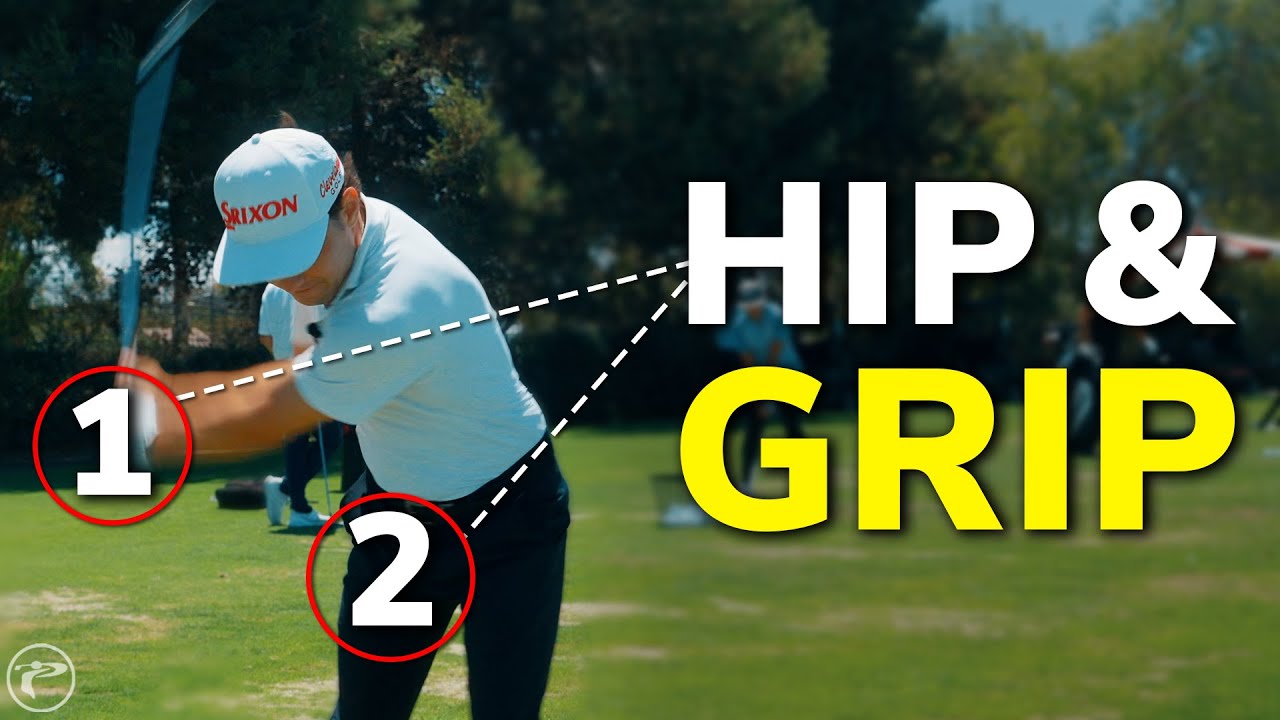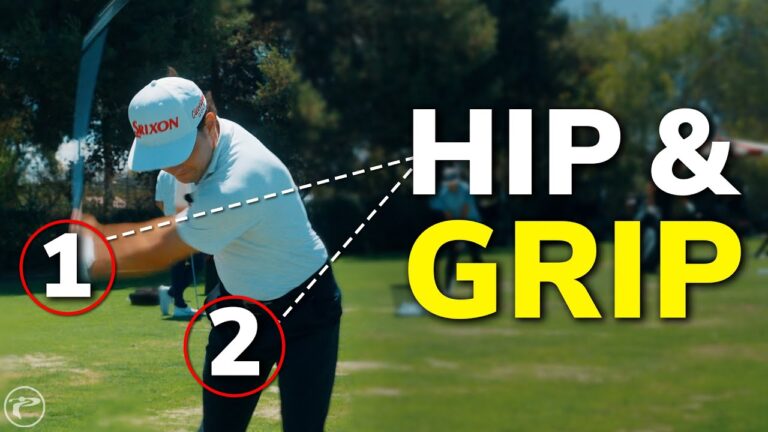
Transform your golf game by mastering the downswing with the perfect synchronization of your hips and grip. Discover the secret techniques used by pros for powerful, controlled, and consistent ball striking.
Have you ever watched professional golfers and wondered how they start their downswing so smoothly and powerfully? This secret lies in the perfect synchronization of two crucial elements: the hip and the grip. This dynamic duo working in harmony is what sets apart the pros from the amateurs, generating effortless power, control, and consistency in their ball striking.
In this comprehensive guide, we’ll break down the essential steps and key concepts behind starting your downswing like a pro. Whether you’re struggling with timing, losing control of the club, or wanting to add more precision, understanding how to fire your hips and grip together is the game-changer you’ve been searching for.
Table of Contents
- Understand the Role of Hand Speed and the Trail Elbow
- Master the Hip and Grip Connection for Maximum Control
- Develop the “Skip the Rock” Feel to Lead with Your Elbow
- Sequence Your Lower and Upper Body Correctly
- Maintain Proper Setup and Weight Distribution
- Use Drills to Reinforce Hip and Grip Synchronization
- Achieve Consistent Compression and Better Ball Flight
- Frequently Asked Questions (FAQ)
- Conclusion: Swing Like a Pro
Understand the Role of Hand Speed and the Trail Elbow
A powerful and efficient downswing begins with utilizing hand speed and your trail elbow. Rather than letting your arms drop, feel your trail elbow leading ahead. This motion prevents the club from getting stuck and ensures a smooth path to the ball.
How to Feel It
- Focus on your trail elbow at the top of your backswing.
- Feel the elbow move forward and downward in sync.
- Maintain hand speed as your arms and hands work in unison.
This feel helps your downswing become more connected, enabling natural impact with the clubhead.
Master the Hip and Grip Connection for Maximum Control
Pairing your lead hip’s movement with your hands’ grip creates power and control. Picture your lead hip opening as the grip tugs forward in sync. This connection stabilizes the club and produces crisp, quality strikes seen in pro swings.
How to Practice
- Set up with a natural grip and stance.
- Pair your lead hip opening with your hands pulling the grip.
- Ensure your sternum and hands stay connected, leading to impact.
This practice creates a stable clubface and consistent swing path.
Develop the “Skip the Rock” Feel to Lead with Your Elbow
Imagine skipping a rock to shallow your club naturally while swinging. Lead your downswing with your trail elbow, allowing the club to approach the ball from inside, crucial for power.
Steps to Feel It
- Let your trail elbow move forward and down at your downswing start.
- Keep your hands connected with the grip as the club shallows.
- Combine with hip rotation for cohesive movement.
Consistent practice avoids common downswing mistakes like dropping the club under the plane.
Sequence Your Lower and Upper Body Correctly
Proper body sequencing is essential. Initiate with the hips, feeling your arms and hands move together. This ensures control, preventing stalls or throws in your swing.
How to Achieve It
- Start the downswing with your lead hip opening.
- Move arms and hands in unison with your rotation.
- Maintain slight leading with your hands in longer swings.
Correct sequencing results in effortless swings and improved striking.
Maintain Proper Setup and Weight Distribution
Setting up effectively impacts your swing. Avoid sitting back; instead, keep hips slightly forward and engaged. This setup allows natural hip rotation and grip pull without losing balance.
Setup Tips
- Keep hips behind the ball and over ankles.
- Balance weight on the balls of your feet.
- Maintain a slight upper body forward tilt.
Good setup habits enable a powerful and connected downswing.
Use Drills to Reinforce Hip and Grip Synchronization
Drills are vital for instilling hip and grip synchronization. Focus on the clubhead crawling down your forearm to ensure natural club shallowing.
Sample Drill
- Take your setup and make a smooth backswing.
- Track the clubhead down your lead forearm on the downswing.
- Ensure all movements are cohesive for a solid shot.
Regular drills build muscle memory and consistency.
Achieve Consistent Compression and Better Ball Flight
Successfully syncing hip and grip mechanics leads to consistent compression and enhanced ball flight. This results in powerful strikes and controlled fade flight paths common among pros.
Compression Signs
- Ball flies with a controlled fade.
- Feeling of clubhead “crawling” down forearm.
- Consistent shot sound and feel with improved control.
Focus on these signs for swing confidence and refinement.
Frequently Asked Questions (FAQ)
Q: What is “hip and grip” in the downswing?
A: The synchronized lead hip opening and hands pulling the grip through the downswing, crucial for power and consistency.
Q: Why lead with the trail elbow?
A: It helps shallow the club, maintaining connection with rotation for a natural swing path.
Q: How to prevent club flipping?
A: Start with hips and trail elbow movement, keeping hands ahead for natural release.
Q: Best practice for downswing techniques?
A: Drills focusing on forearm club tracking and hip-grip movement for smooth swings.
Q: Can these techniques improve drive length?
A: Yes, by generating efficient power and compression, leading to longer, controlled drives.
Conclusion: Swing Like a Pro
The perfect balance of hip and grip movement is a powerful, often overlooked secret. By focusing on hand speed, leading with your trail elbow, syncing your hips and grip, and maintaining proper sequencing and setup, you’ll unlock a new level of control, power, and consistency.
Remember, it’s not about forcing or rushing your swing; it’s about feeling the connection. With practice, you’ll develop a downswing that’s both smooth and effective, making golf more enjoyable and rewarding. Start today and watch your game improve with every swing!


0 Comments